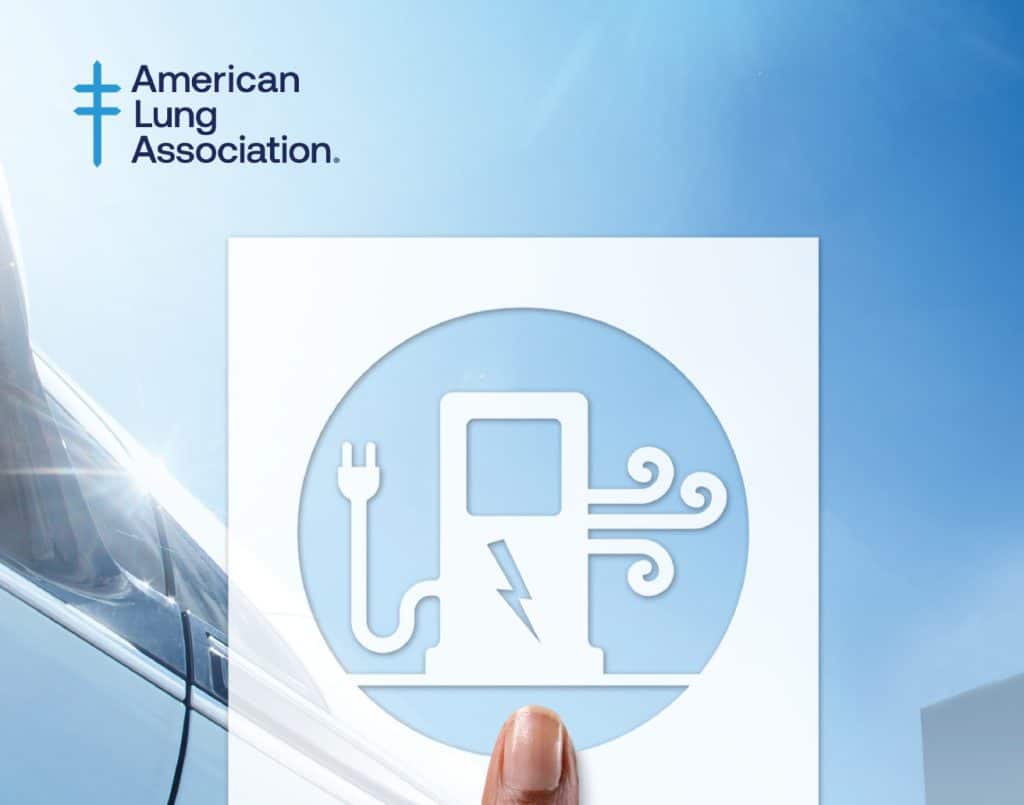
The Lung Association’s new “Driving to Clean Air” report illustrates the potential health benefits if all new passenger vehicles sold are zero-emission by 2035. The report also projects that the nation’s electric grid will be powered by clean, non-combustion renewable energy replacing fossil fuels by 2035. This new report comes at a time when policymakers are considering adoption of new vehicle standards to curb harmful emissions.
The transition to zero-emission passenger vehicles, including cars, SUVs and light pickup trucks, powered by clean, non-combustion electricity from 2020 to 2050 would result in up to:
- $978 billion in public health benefits
- 89,300 fewer premature deaths
- 2.2 million fewer asthma attacks
- 10.7 million fewer lost workdays
The Lung Association’s report comes just weeks after the U.S. Environmental Protection Agency (EPA) released a proposed rule that would create stricter emissions standards for cars and could make two-thirds of new passenger vehicles zero-emission by 2032. EPA is currently taking comments on this proposed rule.
“Too many communities across the U.S. deal with high levels of dangerous pollution from nearby highways and other pollution hot spots. In addition, the transportation sector is the nation’s biggest source of carbon pollution that drives climate change and associated public health harms. This is an urgent health issue for millions of people in the U.S.,” said Harold Wimmer, President and CEO of the American Lung Association. “Fortunately, the goal of transitioning passenger vehicle sales to zero-emission, and the resulting health impacts, are within reach. EPA’s proposed rule is a great first step, and a growing number of states are adopting 100% zero-emission vehicle standards as a pathway to reducing harmful emissions and improving health.”
According to the 2023 “State of the Air” report, approximately 120 million people in the U.S. live in areas with unhealthy levels of air pollution. Low-income communities and many communities of color too often bear disproportionate burdens from air pollution broadly, and transportation pollution, specifically.
This new report that focuses on passenger vehicles stems from the more comprehensive March 2022 American Lung Association “Zeroing In On Healthy Air” report.
The technologies and systems are in place to make these benefits a reality if leaders act to implement policies and invest in the transition today. The American Lung Association is urging EPA to finalize strong pollution limits for new cars that drive a nationwide transition to zero-emission vehicles.